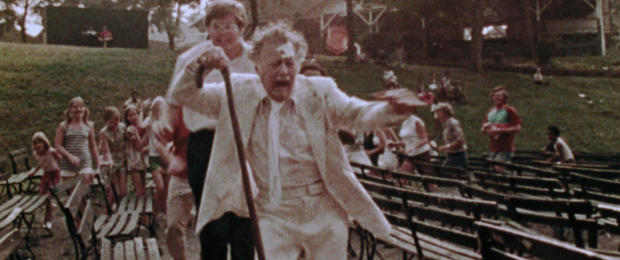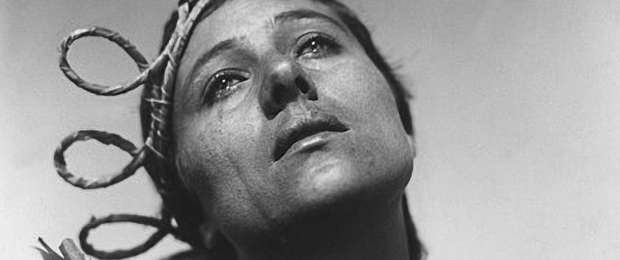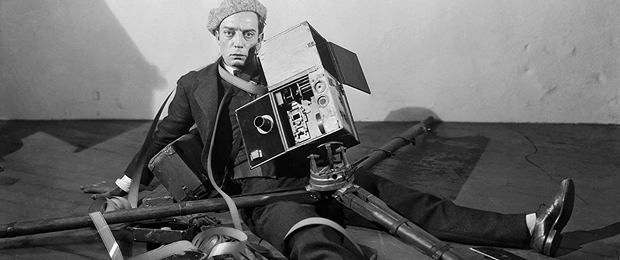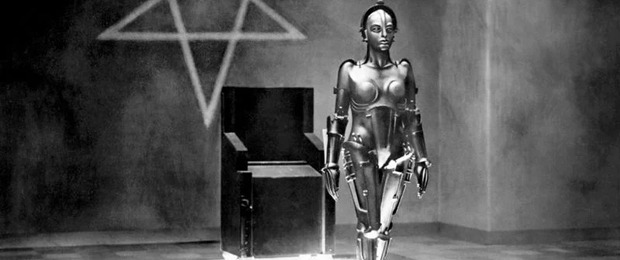For reasons of (very) poor conservation and great fragility, of rights, for negligence too… Many films have been lost forever. Until some are miraculously found, sometimes decades later.
In 2013, the US Library of Congress published a study with absolutely dramatic findings : 75% of American films made and produced during the silent era, that is between 1912 and 1929, were irretrievably lost. Of 11,000 films produced, only 1,575 still existed.
And it wasn’t only about little forgotten films, but also about famous works, like the wonderful London after midnight by Tod Browning with Lon Chaney, or the first adaptation of Gatsby the magnificent, released in 1926, just one year after the publication of the book by F. Scott Fitzgerald. This shows the extent of the disaster.
If in France the situation seems to be less alarming, due to a lesser impact of censorship and a more assertive studio retention policy, as a Slate article also published in 2013 wrote in the wake of the study by the Library of Congress, the fact remains that these works have posed many conservation problems, in particular due to the great fragility of the film reels, made of ammonium nitrate, which is extremely flammable.
If we add to this various legal problems, reels sometimes stored anywhere and not at all inventoried by pure negligence, to name only these cases, a good number of works have been declared lost forever.
But, sometimes, thanks to miracles, many decades later, certain works are found, to the delight of moviegoers. Here are five examples.
Directed by Fritz Lang on a screenplay adapted from the original novel by Thea von Harbou, Metropolis is a black and white silent film narrating a class struggle in a megalopolis of a dystopian society in the year 2026.
Seminal Science-Fiction film, of an incredible modernity which has fed the imagination of many filmmakers but also irrigated architecture and even the world of video games with its major influence, Metropolis was a technical and human tour de force, shot over 310 days and 60 nights. The critical and commercial failure of Fritz Lang’s film was all the more painfully felt.
In 2008, it was a small cinematographic miracle that lovers of the 7th Art would like to see more often. An almost complete version of the film was found with its missing scenes, in Buenos Aires, Argentina.
“Almost all the scenes that were missing until now have been found, including two large important scenes” said Anke Wilkening, conservator of the Friedrich Wilhelm Murnau Foundation, owner of the film rights and responsible for the preservation of German cinematographic heritage.
Warner Bros. GmbH
These scenes, which constitute nearly 25 min, appeared on the 16 mm film discovered at a private home by collaborators of the cinema museum of the Argentine capital. On February 12, 2010, the new, restored, 145-minute version was screened simultaneously in Berlin as part of the 60th Berlinale, at the old Frankfurt Opera House and on the Arte channel, accompanied by its original musical score written in 1926 by Gottfried Huppertz, performed live by the Berlin Radio Symphony Orchestra.
After more than 80 years of research, truncated versions and several restorations, we can finally see an almost complete version, in any case close to that designed by Fritz Lang in 1927.
From the director Ted Kotcheff, the general public especially knows his brilliant stroke that was the first masterful part of the Rambo saga, which has become a classic. It took little for the spectators to never discover a pure nugget that he had signed eleven years before: Wake in Fright, shot in the Australian Outback.
Or the story of John Grant (formidable Gary Bond), teacher of a school lost in the Australian desert, who decides to return to Sydney for the holidays. But he first stops in the small mining town of Yabba. In the evening, he gambles and gets drunk. What was supposed to be a one-night affair extends over several days…
Tense to bursting, populated by a gallery of redneck characters drowning their boredom in drinking and violence, Kotcheff drew with this film a striking portrait of a hostile (back) country that did not necessarily make you want to stay there. .
Still, the negative of the film was lost for decades, which prompted an international search. Until the day when, in 2004, the Australian producer Anthony Buckley found it in a warehouse in Pittsburgh in a crate on which was written “For Destruction”… Closely associated with the restoration of his film, Kotcheff was once again able to present Wake in Fright in 2009, since released on DVD and Blu-ray.
The Amusement Park has a rather unique production history. This medium-length film was in fact an order from Lutheran Servicesan international NGO of the Lutheran Church, with the aim of raising awareness through images of the effects of old age, the stigmatization of society and the mistreatment of the elderly.
The story ? That of a perky old man, who is about to spend an ordinary day in an amusement park. Along the way, he meets a double of himself, wounded, shaggy and in tattered clothes, who warns him of the dangers that await him. The joyful man pays no attention to warnings. He enters the park, without suspecting that he is going to live a terrible nightmare…

Potemkin Movies
Lost for 46 years and found very shortly before Romero’s death in 2017, this lost medium-length film by George Romero was shot in 1973. The result went far beyond the wishes of its sponsors, who were terrified by the film. The Amusement Park was finally able to be screened in 2021 in a restored 4K copy, supervised by Suzanne Romero, in collaboration with IndieCollect, a New York company responsible for preserving independent American cinema.
Danish director and major figure in silent film era, great lover of history, Carl Theodor Dreyer had been passionate about the life of Joan of Arc since her canonization in 1924. Reworking a manuscript written by Joseph Delteil who traced the trial of Joan of Arc in 1431, he will deliver in 1928 The Passion of Joan of Arc.
A work carried at arm’s length by an actress from the theater, Renée Falconetti, ready to endure almost all the tortures to better embody her character; including until receiving real spit in the face. Of the 1,500 shots shot for The Passion of Joan of Arc, more than 400, that is to say almost a third, are very close-ups centered on the luminous and innocent face of the actress…

Great Classic Films
As in spiritual accord with his purpose, The Passion of Joan of Arc perishes twice by the flames. The first time in 1928, when he was already censored by the authorities because of his criticism of the clergy. Carl Theodor Dreyer then succeeds in reconstructing the film using the original takes that were not kept during editing.
But, ironically, this second “tinkered” version also burned. We thought the film was definitely lost, until we found a version apparently faithful to the spirit of Dreyer (ie uncensored) in a psychiatric hospital in Oslo in 1981. A miracle certainly.
Absolute icon of burlesque cinema alongside Charles Chaplin, possessing an incredible physical game, craftsman of stunts as bewildering as they are ultra risky, an always impassive air of a sad clown, Buster Keaton has left an indelible mark in the history of silent cinema.
The first film he interpreted from a written script, The Cameraman is a pure masterpiece, in which he plays Luke Shannon, an apprentice reporter for a film news company. Obviously, nothing goes as planned, and his beginnings are disastrous…

MGM
In 1965, a huge fire ravaged an MGM warehouse, following an explosion caused precisely by reels of nitrate film. Among the losses to be deplored were the negatives of the Cameramanthen considered lost.
A copy of the film was found three years later, in Paris. Yet another, but many years later, in 1991. For the record, MGM wanted the film to end with Keaton’s face, finally smiling. Filmed then presented in test projection to the public, this end scene was categorically rejected by the spectators. And fortunately. Still, nothing remains of this famous end scene: it went up in smoke in the fire of 1965.
These 5 great films had completely disappeared, they have been found!

